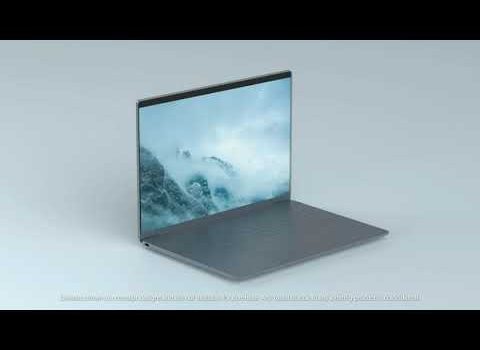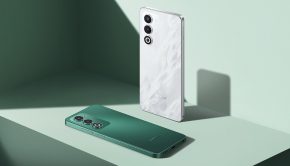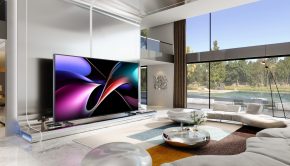Dell Technologies announces Concept Luna – the future in sustainable PC design
Pushing the Limits of Sustainable PC Design: Concept Luna
By Glen Robson, Chief Technology Officer, Client Solutions Group
What if? That’s the starting point for every design decision we make at Dell Technologies – and how we push ourselves to not only create great products but also technology which addresses complex societal challenges. And with growing concerns about the climate crisis, e-waste and resource constraints, the question driving us is “What if we could push reuse to the limit and dramatically reduce the carbon footprint of our products?”
The commitments we have made to deliver positive environmental impact span decades and involve our entire company. And our ambitious goals to accelerate the circular economy and achieve net zero greenhouse gas emissions have never been more mission critical.
Product design plays a big role in realising both of these goals. Our current circular design practices continue to drive leadership across our product portfolio in pursuit of these goals. In the last year alone, we introduced closed-loop aluminium from out of used hard drives, bioplastics made from tree waste in the paper making process and scaled our use of reclaimed carbon fibre to over 1.2 million pounds. But we need to find new keys to open new doors to get us there faster. Last year we shared our vision for a parallel innovation workstream to accelerate circular design and today we’re sharing the first prototype from these efforts: Concept Luna
A proof-of-concept developed in collaboration with Intel, Concept Luna explores revolutionary design ideas to make components immediately accessible, replaceable, and reusable—reducing resource use and keeping even more circular materials in the economy. It was created to test what could be possible, not to be manufactured and sold. But if all the design ideas in Concept Luna were realised, we could expect to see an estimated 50% reduction in overall product carbon footprint.[i]
Here’s why we’re excited about Concept Luna:
- A reduced product carbon footprint: We looked at brand new ways to increase energy efficiency, deliver better power and cooling and experimented with materials that have a smaller carbon footprint to help deliver a more decarbonised device.
o Motherboards can be one of the most energy intense components to manufacture – by shrinking its total area by approximately 75% (now smaller than 5,580 mm2)[ii] and component count by approximately 20%[iii], we estimate the carbon footprint of the motherboard could be reduced by 50%.[iv]
o We completely reconsidered the layout of all internal components – relocating that smaller motherboard to the top cover puts it closer to a larger surface area exposed to the cooler air outside. This, combined with separating it from the battery charging unit in the base, leads to better passive heat distribution and could totally eliminate the need for a fan.
o These efficiencies could significantly reduce the overall power needs – making way for a smaller battery with advanced deep-cycle cells that is still powerful enough for daily use.
o An aluminium chassis processed using hydro power and using a stamped aluminium construction requires less energy and produces minimal scrap.
Concept Luna is a strong example of how we are exploring new ways to dramatically accelerate progress against our goals. Proving what might be possible is only the first step, the next is to take these innovative sustainable design ideas and evaluate which have the greatest potential to scale across our product portfolio. This concept, and future iterations and others that follow, are how we will build on the existing circular economy leadership you see across our product portfolio today to examine, re-examine and reconsider every step of the product lifecycle, to deliver even more sustainable products in the future.
[i] Baseline used for comparisons is Dell Latitude 7300 Anniversary Edition
[iii] Reduced component count based on the smallest implementation of AlderLake-M (ADL-M) platform
[iv] Baseline used for comparisons is Dell Latitude 7300 Anniversary Edition
[v] Baseline used for comparisons is Dell Latitude 7300 Anniversary Edition







